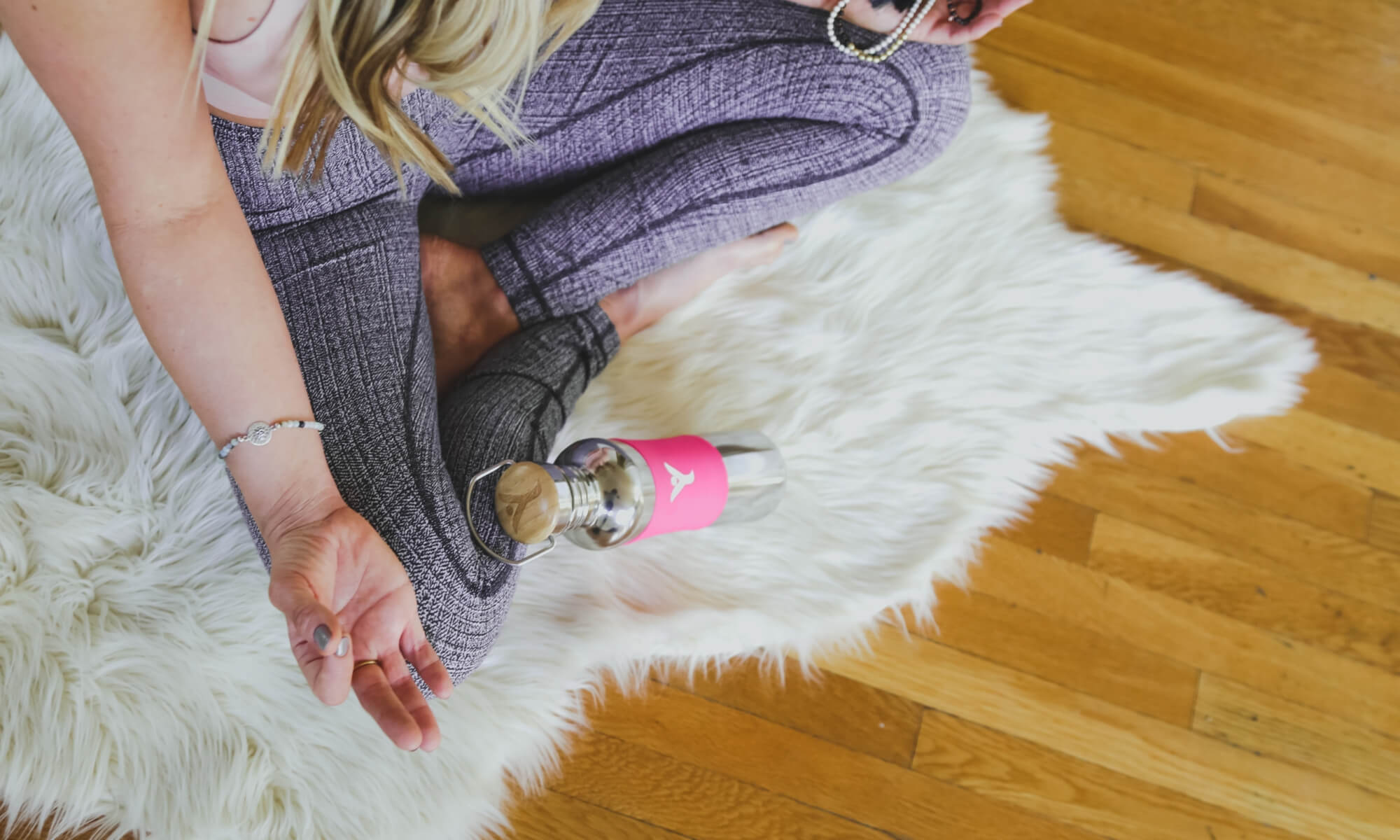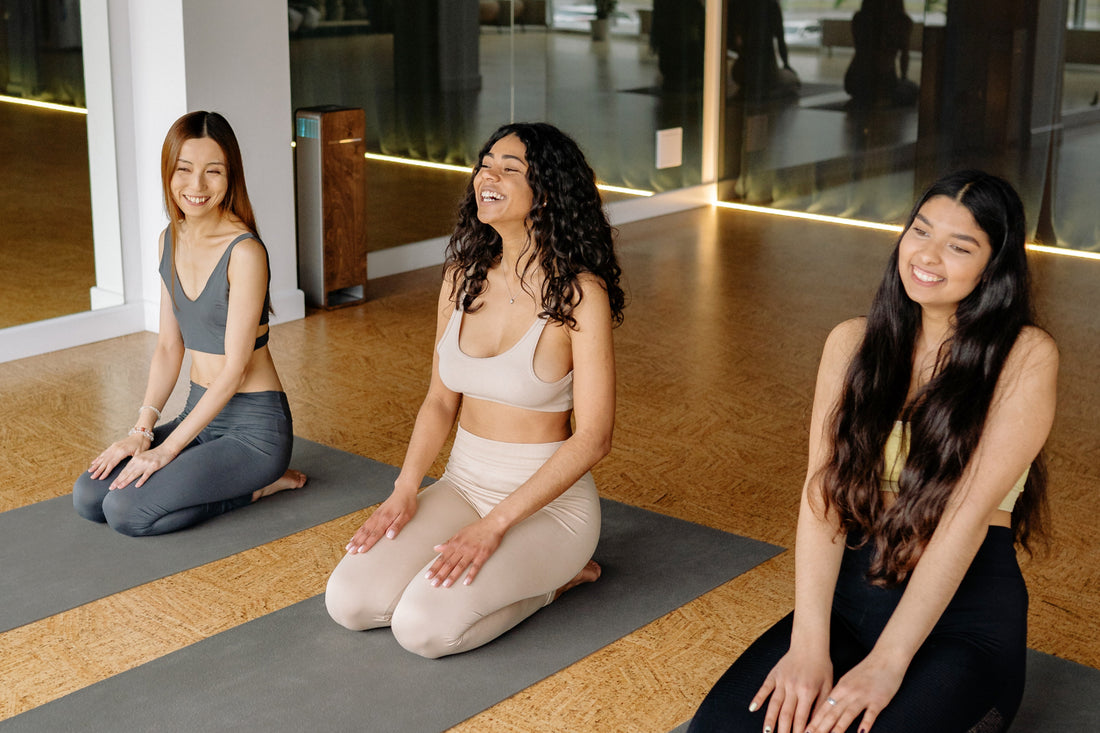Dondequiera que vayas y lo que sea que estés haciendo, siempre llevas contigo una poderosa herramienta para gestionar el estrés: tu respiración.
Muchos de nosotros nos enfrentamos a situaciones estresantes o sentimos una sensación general de estar “al límite” todos los días. La vida moderna es agitada y estamos constantemente al alcance de las demandas y presiones de los demás a través de nuestros teléfonos inteligentes, por lo que a veces parece que no hay espacio ni tiempo para calmarnos.
El estrés y la ansiedad pueden tener una serie de efectos a corto y largo plazo , entre ellos:
- Baja energía y/o bajo estado de ánimo
- Problemas con la digestión
- Un sistema inmunológico comprometido, que provoca resfriados y otras enfermedades.
- Insomnio o sueño intranquilo
- Preocupación constante y pensamientos acelerados.
- Mala memoria o concentración
Y los períodos prolongados de estrés significan que usted está funcionando día a día con altos niveles de hormonas del estrés en su cuerpo, lo que se ha relacionado con la aparición de depresión y trastornos del estado de ánimo.
Pero, ¿qué puedes hacer? No quieres dejar que el estrés te afecte, pero ¿cómo puedes cuidarte y darle un descanso a tu sistema nervioso?
Usa tu respiración
La respiración se ha utilizado en diversas tradiciones meditativas durante siglos como herramienta para alterar el estado del sistema nervioso e inducir una sensación de calma. Ahora, la investigación científica respalda este antiguo conocimiento con un creciente conjunto de pruebas que demuestran que controlar la respiración tiene un efecto directo en el estado mental y en la función fisiológica del cuerpo.
Puedes usar tu respiración para cambiar tu respuesta al estrés. Esto funciona a un nivel emocional inmediatamente perceptible: te sentirás más tranquilo y en control cuando uses técnicas de respiración durante una situación estresante. Y también funciona a un nivel físico: las hormonas del estrés en tu sistema disminuyen y tu cuerpo pasa de estar dirigido por el sistema nervioso simpático (el sistema de "lucha o huida") al sistema nervioso parasimpático (el modo de "descanso y digestión").
Cultivar la conciencia de la respiración también ayuda a entrar en el momento presente. De hecho, la respiración consciente es un aspecto crucial de la meditación consciente. El simple hecho de notar la respiración (aunque no intentes controlarla en absoluto) puede interrumpir los patrones de pensamiento negativos y recordarte que estás aquí, en este momento y en tu cuerpo. Y eso por sí solo suele ser suficiente para frenar los efectos en espiral del estrés.
Para ayudarte a aprovechar el poder de tu respiración, hemos reunido ocho técnicas de respiración simples pero poderosas que puedes comenzar a usar ahora mismo.
Vuelve a tu respiración. Vuelve a la calma.
1. Conciencia natural de la respiración
La conciencia natural de la respiración es perfecta para usarla en cualquier momento. Es sutil y nadie notará que la estás haciendo, por lo que puedes usar esta técnica en medio de situaciones que te generen ansiedad en el trabajo o mientras estás fuera de casa.
Sin intentar controlar o cambiar la respiración, comience a notar cada inhalación y exhalación. Tome conciencia del ritmo natural de la respiración. Observe la forma en que la respiración llena y expande los pulmones; tal vez note que la columna se extiende un poco con cada inhalación y se relaja con cada exhalación.
La mente vagará. No hay problema. Deja que los pensamientos entren en la mente y luego pasen, y vuelve a centrar suavemente la atención en la respiración.
2. Respiración purificadora simple
Cuando estamos estresados, el cuerpo suele reaccionar tensándose y tratando de mantener todo bajo control, o de contenerlo todo. Se nos tensan los hombros, apretamos las mandíbulas y tendemos a respirar superficialmente, con respiraciones agudas que se quedan en la parte alta del pecho.
A veces, la mejor manera de liberar la tensión del estrés es con una respiración profunda y completa seguida de una liberación consciente.
Entonces, cuando notes que te sientes estresado, haz una pausa. Inhala profundamente por la nariz, con la boca cerrada, llenando los pulmones con la mayor cantidad de aire posible. Mantén la respiración durante uno o dos segundos. Luego abre la boca y exhala. Suéltalo.
Con esa exhalación fuerte, libera toda la tensión de la parte superior del cuerpo. Repite el ejercicio tantas veces como sea necesario.
3. Respiración abdominal
La respiración abdominal te conecta con tu cuerpo y aumenta el flujo de oxígeno hacia el torrente sanguíneo. Esto a su vez calma el sistema nervioso y te da la oportunidad de descansar y relajarte. Al igual que las dos primeras técnicas, es sutil, por lo que puedes usarla en cualquier lugar y en cualquier momento.
Respirando por la nariz, inhale profundamente y deje que el aire llegue hasta las cámaras inferiores de los pulmones. El abdomen se infla como un globo.
Cuando ya no puedas expandir más el abdomen, exhala lentamente por la nariz. Al hacerlo, el abdomen se contrae y el ombligo se retrae hacia la columna.
Nuevamente, inhala hacia el abdomen, llenando el vientre con el aire y exhala hacia el abdomen.
Repita esto de 5 a 10 veces y luego permita que la respiración vuelva a un ritmo natural.
4. La técnica de respiración 4-7-8
La técnica 4-7-8 es un potente calmante del estrés . Se puede practicar sentado o acostado, y se puede utilizar mientras se está acostado en la cama para ayudar a conciliar el sueño. Utilice este ejercicio en casa o en una situación en la que sepa que puede relajarse por completo y que nadie lo molestará.
Encuentra una postura cómoda, ya sea sentado o acostado. Apoya la punta de la lengua en el paladar, justo detrás de los dientes superiores, y respira con tranquilidad unas cuantas veces para prepararte. La lengua debe permanecer en esta posición durante toda la práctica.
Luego, deja que los labios se separen suavemente y produzcan un sonido silbante mientras exhalas, expulsando todo el aire del cuerpo.
Cierra los labios e inhala con tranquilidad por la nariz. Mientras lo haces, cuenta mentalmente 4 segundos.
En la parte superior de la inhalación, mantenga la respiración durante 7 segundos.
Y luego separa los labios y haz ese mismo sonido silbante mientras exhalas durante un conteo de 8 segundos.
Haz 4 rondas de esta manera: inhala durante 4, mantén la respiración durante 7 y exhala durante 8. Cuando te sientas cómodo con 4 rondas, puedes aumentar gradualmente hasta 8 rondas.
5. Respiración zumbante
Esta es otra técnica de respiración profundamente relajante para practicar en casa. Es una forma excelente de aliviar la ansiedad e interrumpir los patrones de pensamiento negativos.
Sentado en una posición cómoda y erguida, utilice los pulgares para cerrar los oídos y deje que las puntas de los cuatro dedos de cada mano descansen suavemente sobre el rostro. Los dedos medios descansan sobre los párpados para mantener los ojos suavemente cerrados.
Respira con normalidad unas cuantas veces. Los dientes apenas se tocan, pero la mandíbula está relajada.
Al exhalar, comience a tararear con la boca aún cerrada. Al final de la exhalación, inhale profundamente. Y luego, vuelva a exhalar y tararee. Puede tararear suavemente o puede hacerlo muy fuerte. Hágalo tan fuerte como le resulte agradable.
Los oídos todavía están cubiertos por los pulgares para que puedas escuchar el sonido dentro de tu cabeza; y puedes sentir la suave vibración del zumbido en los dientes que se tocan suavemente.
Repita esto tantas veces como desee, pero comience con al menos 8 respiraciones.
6. Respiración yóguica
La respiración yóguica completa calma el sistema nervioso y le envía una señal al cuerpo de que estás a salvo, de que todo está bien.
Coloque la mano derecha sobre el vientre y la mano izquierda sobre el pecho.
Para prepararse, respire con la mano derecha, llenando el abdomen con el aire. Luego, exhale con la mano derecha, con el abdomen caído. Respire 4 veces más de esta manera, respirando con la mano derecha y exhalando con la mano derecha. Expanda el abdomen tanto como pueda con cada inhalación.
Luego, respira con la mano izquierda, llenando el pecho con el aire. Y exhala con la mano izquierda, el pecho cae. Haz 4 respiraciones más de esta manera; respira con la mano izquierda y exhala con la izquierda. Con cada inhalación, llena el pecho hasta la clavícula.
Finalmente, para lograr una respiración yóguica completa, conecta estas dos acciones. Comienza respirando hacia la mano derecha: el vientre se eleva. Cuando el vientre ya no pueda elevarse más, continúa respirando hacia la mano izquierda: el pecho se eleva. Luego exhala con la mano izquierda: el pecho desciende; y con la mano derecha, el vientre desciende.
Continúe durante 5 respiraciones. Inhale hacia la derecha y hacia la izquierda. Luego, exhale hacia la izquierda y hacia la derecha.
7. Respiración uniforme
Igualar la duración de las inhalaciones y exhalaciones es una forma rápida y efectiva de entrar en un estado mental más estable.
Empieza por observar la duración de tus inhalaciones en este momento, tal como son. ¿Estás inhalando durante 2 segundos? ¿3 segundos?
Y luego, iguala la duración de la exhalación con la de la inhalación. Si inhalas durante 2, exhalas durante 2. Si inhalas durante 4, exhalas durante 4.
Aumente gradualmente la duración de la inhalación y la exhalación, manteniéndolas iguales. Trate de extenderlas hasta 8 segundos, pero tómelo con calma. Si le parece demasiado, manténgalas en 5 o 6 segundos.
8. Respiración dirigida expansiva
Esta es una última técnica que puedes utilizar cuando tengas unos minutos de tranquilidad para ti. Esto aumentará el flujo de oxígeno en tu cuerpo y mejorará tu conciencia de la respiración, a medida que aprendes a dirigir las inhalaciones a diferentes áreas del cuerpo.
Siéntese en una postura cómoda y erguida. Luego, coloque las manos sobre la caja torácica con las puntas de los dedos tocándose en el centro. Respire de forma suave y natural unas cuantas veces.
Ahora, inhala profundamente con ambas manos para expandir la parte delantera de la caja torácica y exhala.
Inhala con la mano derecha , expandiendo el lado derecho de las costillas y exhala.
Inhale hacia la parte posterior de la caja torácica, expandiendo la parte posterior del cuerpo y exhale.
Luego inhala con la mano izquierda para expandir el lado izquierdo de las costillas y exhala.
Repita el ejercicio 4 veces más. Observe el poder de la mente para dirigir la respiración y disfrute de la sensación de espacio y expansión que se crea en el cuerpo.
Esperamos que estas técnicas de respiración le brinden la confianza para calmarse, sin importar lo que esté sucediendo .
Para ayudar a tu cuerpo a manejar el estrés y reducir la ansiedad, recomendamos beber agua alcalina. Las investigaciones demuestran que el aumento de los niveles de ácido en el cuerpo puede hacer que seas propenso a la ansiedad , lo que estimula la liberación de hormonas del estrés.
Esto genera tensión en el cuerpo, pero también agota tu energía y afecta negativamente tu estado de ánimo y el funcionamiento de los órganos del cuerpo. La botella de agua alcalina aislada DLYN es una forma fácil y asequible de garantizar que puedas beber agua alcalina todos los días, lo que te brinda las mejores bases para sentirte tranquilo y bien.





